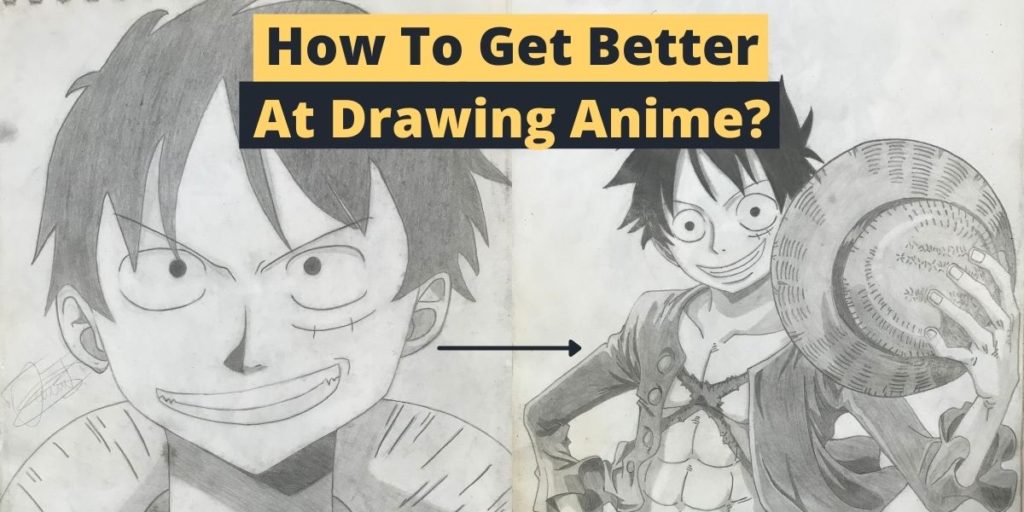
Getting better at drawing anime can be a challenge, but you can become very good at it if you have the right approach to do it. I’ve been drawing for more than 15 years, and anime was the reason I started.
In this article, I want to share my experience and process with you so that you can get better at drawing anime. Let’s get started!
- Get Into A Drawing Routine
- Learn Basic Anatomy
- Learn To Draw In Perspective
- Learn About Value (Light and Dark)
- Practice Mindfully
- Learn From The Pros By Using References
- Learn About Composition
- Study Different Drawing Styles
- Be Open To Criticism
- Don’t Get Discouraged
- Make Drawing An Enjoyable Experience
1- Get Into A Drawing Routine
You can read every blog about drawing anime or watching every video about getting better at drawing anime. Still, if you never take a pencil, a sheet of paper, and start drawing, it’s doubtful you’ll see improvements. To get better at drawing anime, you need to practice; practice a lot. Behind any great anime artist, there is a ton of hours drawing and thousands of sketched sheets of paper.
Of course, some people have some predisposition to draw better, but I assure you they went through thousands of hours of drawing practice before getting to the level they are right now. With enough practice, anyone can learn to draw because drawing is a skill, not a talent.
When determining your drawing routine, I recommend you dedicate at least one hour a day to it. However, if you can practice drawing for more hours a day, by all means, do it. Depending on the amount of time you draw daily, the time it takes to learn to draw anime can be shorter. (That blog I just linked to can give you a general idea of the time it takes to learn to draw anime and what results to expect as time passes)
Tip #1: Be patient with yourself. It is normal if your drawings don’t look like you want them to look as soon as you start to draw. That’s, in fact, the natural process of learning anything. Just keep drawing and practicing every day; when you give yourself the time to improve, results will naturally show.
2- Learn Basic Anatomy
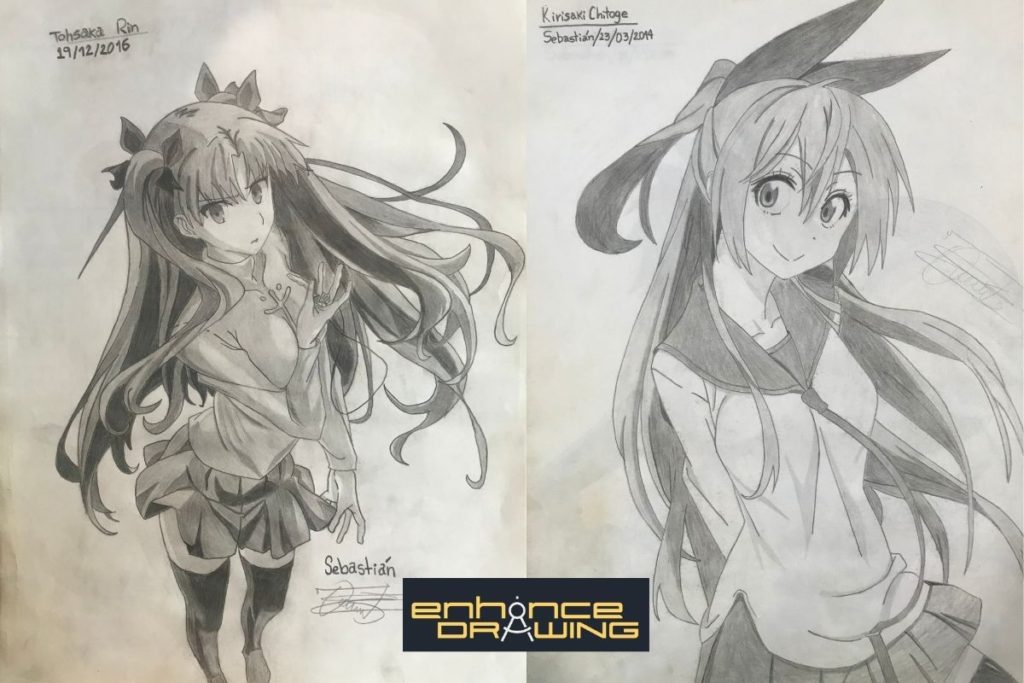
Almost any drawing style requires artists to have basic knowledge about anatomy, and anime is no different. Anatomy is a topic so big it can be overwhelming, but the idea is that we study it little by little. Since we’re just starting to learn to draw anime, having basic knowledge about anatomy is more than enough to start.
Of course, you can study it as in-depth as you want, but remember this is not the only thing you need to study to improve your drawing skills. Make sure you still have time to learn other drawing fundamentals.
Your main goal when studying anatomy is to understand how lines give form to the subjects you’re drawing, not creating masterpieces. The approach to study basic anatomy is to sketch, not draw. Fill as many pages as you can with sketches of what you’re learning, and you will see results very quickly.
Tip #2: Don’t be afraid of making mistakes. If you finish a sketch and don’t like it, simply analyze what’s wrong with it and fix it in your next attempt. Don’t spend time perfecting everything you sketch; what you need at this point is practice, not perfect drawings. And since you still have many other things to learn, the result won’t probably be perfect either.
3- Learn To Draw In Perspective

Everything we see in real life is in three dimensions, and drawings should resemble that if you want them to look dynamic and alive. Since perspective is so common in our everyday life, every time we see an illustration with an inaccurate perspective view, we notice it immediately. For some weird reason, we’re very good at identifying how things should look in perspective, but we’re naturally bad at representing that in a drawing.
Just as with anatomy, you don’t need to know everything about perspective, but just the basics. The best way to approach perspective is by drawing simple shapes like squares, triangles, circles, etc. If you can draw that and understand it, you’ll have a much easier time applying that to faces, bodies, and anything else. Learning to draw simple figures in perspective is relatively simple, so if you feel like you learned it very fast, you can try with some complex figures, like skulls (which are very important for face anatomy).
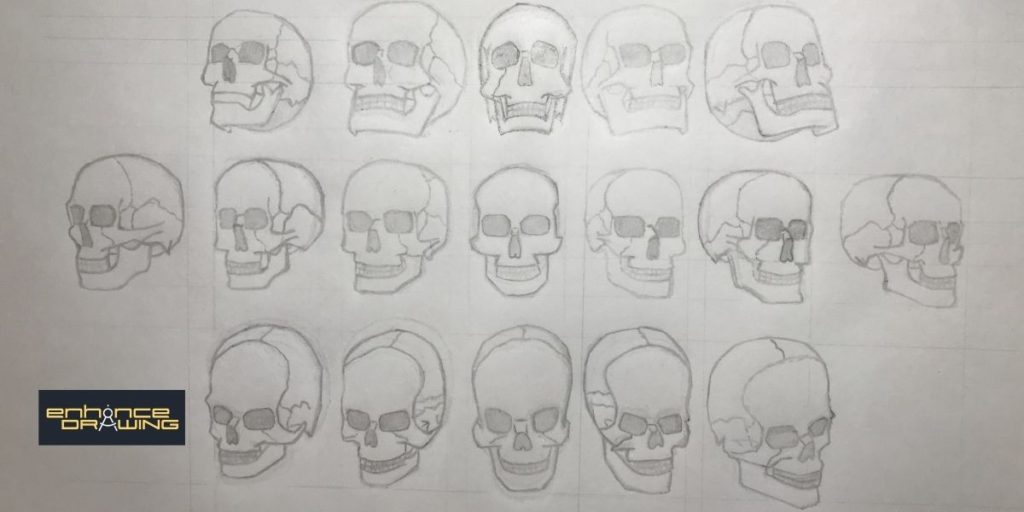
There were many things I had to fix there, but I just focused on continuing practicing!
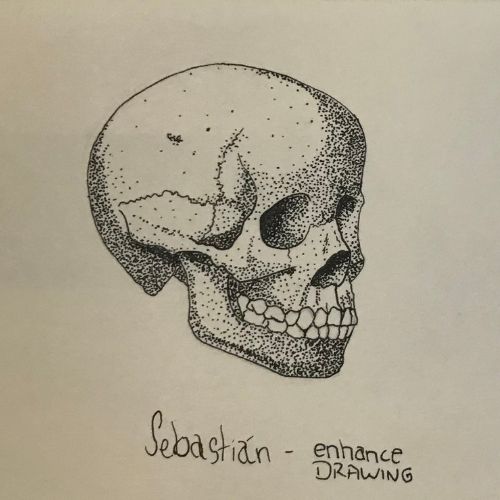
Tip #3: Do study the drawing fundamentals. I know it’s tempting to jump into drawing your favorite anime characters, but just as you can learn drawing the right way, you can also learn an improper way of drawing when doing it without a plan or order. If you learn how not to draw, you’ll have a harder time unlearning that and replacing it with a proper way, so try to control your impulses and learn the fundamentals. It is going to be worth it!
4- Learn About Value (Light and Dark)
Just as with perspective, everything we see in real life has different light values, and when your drawings don’t have any light or dark tones on them, they look incomplete. Again, to get better at drawing anime, you just need to learn the basics of value, as learning this topic alone would take a lot of time and practice.

As you can see in the drawing above, value gave it a lot of life and depth! But before you start shading your drawings, start by shading simple figures, create different value scales with techniques like crosshatching, stippling, or traditional shading. Once you understand how shading works, you can start adding it to your drawings.
The most important thing you need to learn here is how strongly you press your pencils against the paper and see that you can achieve around 6-8 tones with only one pencil. It can be more if you’re using a very dark pencil.
Tip #4: Don’t use colors just now. Color theory is an immense and complex topic, and you still need to have a basic understanding of value to color your drawings correctly. I recommend being patient about learning to color your drawings. You can start studying color theory when you think you’re skilled enough at shading.
5- Practice Mindfully
This advice is something you should apply to your drawing process overall. It is crucial that every time you’re learning to draw anything, you do it with a purpose, not just for the sake of it. Constantly analyze what you’re drawing, compare it to your references, and find improvement opportunities to try on your next drawing attempts.
If you know there’s something wrong with your drawings or sketches, but don’t know what it is, focus on one aspect of your drawing at a time. This approach will help you identify how to make your drawings even better. For example, if you focus on proportions and ignore the rest, you’ll be able to see if there is something wrong with your drawing’s proportions more easily. And you can repeat that with perspective, line quality, etc.
Tip #5: Focus on what you’re studying. For instance, if you’re learning poses, it is unnecessary to draw hair, clothes, eyes, or other details your drawing may have; you just need to draw different poses. If you want to study hair, then draw basic head figures and draw different hairstyles on top of them. No eyes, mouth, or anything else is necessary. It is always best to learn how to draw things one at a time because there isn’t anything distracting you from the main subject, so you’ll understand it quicker.
6- Learn From The Pros By Using References
One of the best ways to get better at drawing anime is learning from other artists’ successes. Usually, when you start learning anatomy, poses, or many other drawing fundamentals, you use references so that you can have a comparison between your sketches and the subject you were drawing. In fact, trying to learn anatomy without using references is almost impossible; you need to study the subject you want to draw to represent it correctly.
You will eventually reach a level where you need little to no references to draw most of your drawings, but getting to that level of proficiency requires many hours of drawing and references stored in your brain. If you want to know how to draw different anime hairstyles, eyes, facial factions, etc., you can use references and practice them a lot until you feel you can draw them without any more references. I have a blog about how to draw without copying or using references if you’re interested in knowing how to do it.
Many people in the art community think drawing from reference is cheating, but it is not. There’s simply no way an artist can know everything there is in the world by heart; you must see a reference and study a subject before representing it correctly in a drawing. If I were to ask you to draw a lion, only using what you remember about it, what do you think the result would be? But if you study lions for weeks or months and you have drawn a lot of them, you’ll probably be able to draw them without using extra references.
Tip #6: Be careful with the references you pick to study. When you use references, you technically learn everything from them, whether it’s good or bad. So if you study drawings from an artist that makes mistakes, you’ll learn those mistakes. Try to follow artists you know are very good or have a good drawing background.
7- Learn About Composition
Composition is one drawing fundamental many beginner artists don’t study. It is natural not to do it since composition is more related to the background or scenario of a drawing. However, learning composition will help you learn how to guide people into seeing what you want them to see, use size scales that make sense, and make your drawings more artistic overall.
Composition is a popular fundamental in photography, which might be harder to apply in many cases. If you want to take a picture with outstanding composition, the factors you can alter on it are minimal, but you can modify any factor in a drawing. For instance, you cannot change the sun’s position when taking a picture, but you can do it in a drawing by drawing the sun in a different place.
Composition is also a big topic, so we shouldn’t learn everything about it at once but instead study it little by little.
Tip #7: Learn composition from art pieces or drawings that make you feel amazed. If the drawing you look at makes you feel emotional or keeps you thinking about it, then that’s a drawing you want to study. Analyze it, draw it, and try to understand why it woke up those feelings inside you.
8- Study Different Drawing Styles
Don’t get me wrong here; our main goal is still to get better at drawing anime. When I say try different drawing styles, I mean anime sub-styles. There are chibi characters, elongated anime characters, regular characters, etc. That without mentioning the different ways you can draw eyes, hair, mouths, noses, eyebrows, and many other features.
One great way to study different anime drawing styles is by drawing characters from your favorite animes. For example, if I compare Baccano! to One Piece or Code Geass to Shingeki No Kyojin, the differences between them are huge. However, they all maintain the same drawing principles, so the more you draw different anime styles, the more similarities you’ll find and start to understand.
Tip #8: Don’t pick a drawing style too quickly. There are so many different drawing styles you should explore many of them before you decide what your favorite ones are. Consider experimenting outside of anime and explore other styles; the worst thing that can happen is that you become a better and more complete artist!
9- Be Open To Criticism
No matter what you do, people will always share their opinions about it; whether you ask for it or not. Some people will tell you you’re the most fantastic artist they’ve ever met; some will tell you your art is horrible. Some will give you constructive criticism, and others destructive criticism. But if you approach this criticism with the right mindset, nothing is stopping you from achieving your goals.
In most cases, there is always value in people’s opinions, so it is best to be open-minded and try to get the best out of them, even if they expressed it rudely. Calm your emotions and think about it later.
Tip #9: Don’t take your family’s and friend’s opinions too seriously. In most cases, people who love you will always praise your work to keep you motivated, which is not bad considering their goal. However, sometimes you need someone to pinpoint your mistakes and help you see things you can’t see for yourself. If there’s any way you can get an opinion from an experienced artist, that can help you improve your art a lot.
10- Don’t Get Discouraged
Now that we’re talking about people’s opinions, there is no way you can get better at drawing anime if you don’t feel motivated. Motivation is crucial when learning to do anything, and you can lose very quickly. Usually, what makes artists lose their motivation the most is when someone says they’re bad at drawing, but think about it this way: if some random person’s opinion is enough to make you quit drawing, did you really want to get better at drawing anime? Below are some very old drawings I did when I was a child.
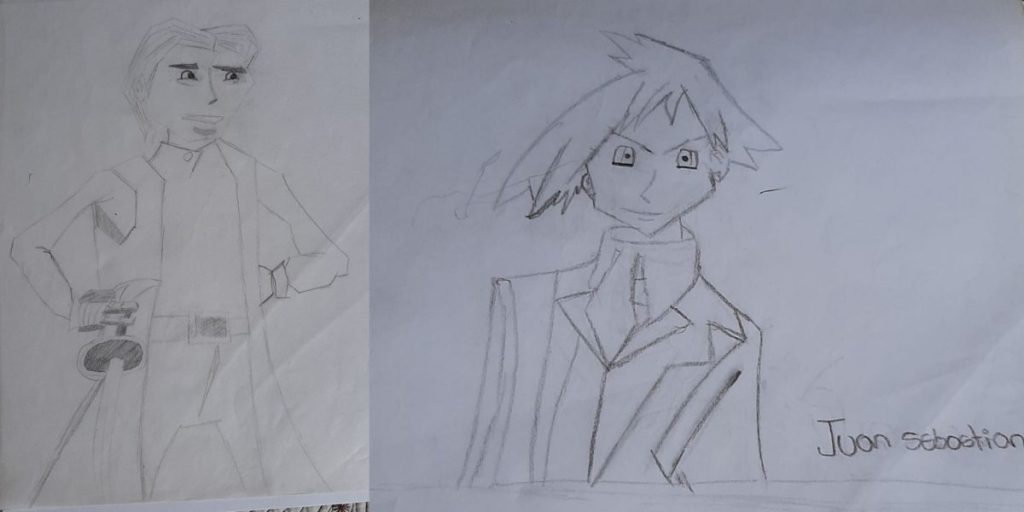
Many people I don’t even remember their names told me I was terrible at drawing, but that didn’t discourage me from getting better, so I kept practicing, and now I’m a better artist. I still have a long way ahead to be an expert artist, but I know it’s just a matter of time and practice to get there.
Tip #11: Make art for yourself. I don’t recommend you draw for other people’s approval but instead draw for yourself. I’ve seen many artists taking wrong drawing approaches to impress other people, like tracing and then claiming their drawings to be freehand. If your source of motivation is other people, when those people leave, you will stop drawing.
11- Make Drawing An Enjoyable Experience
This step might look like a random one to complete the list, but it is not. Making drawing a fun experience is crucial if you want to do it long-term. If you’re going to get better at drawing, you will need to be disciplined and consistent; there are no shortcuts. However, it’s easy to stop drawing if you start to feel like it’s a tedious or stressful experience, so make sure you add activities you enjoy doing or practicing!
Generally, if you just draw, you will fall in love with it and won’t need to think about it too much. But if it isn’t love at first sight, draw what makes you happy until it becomes easier to do other things.
Tip #11: Don’t forget to do actual drawings! All this article was mainly about practice, but it’s important you draw for real every since in a while to measure your progress. You should always see improvements, so that will help you keep yourself motivated.
I hope you the best in achieving your drawing goals.
Happy drawing!
